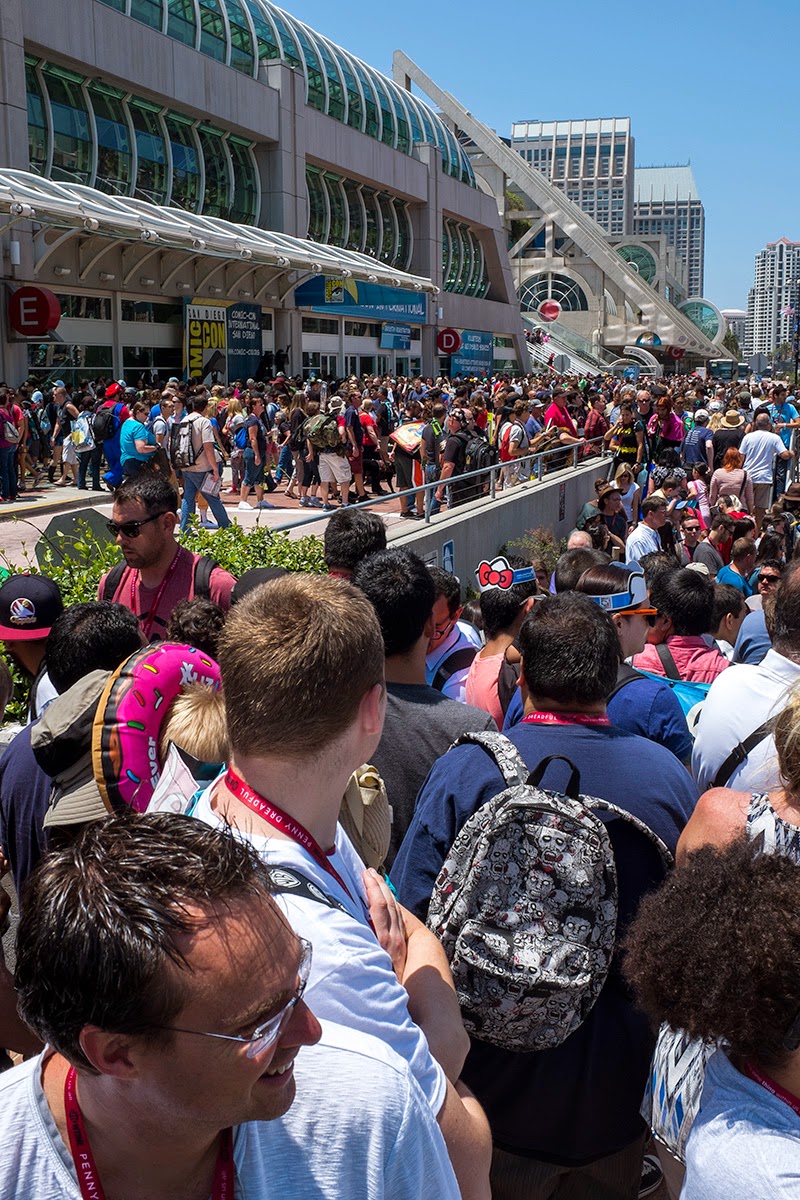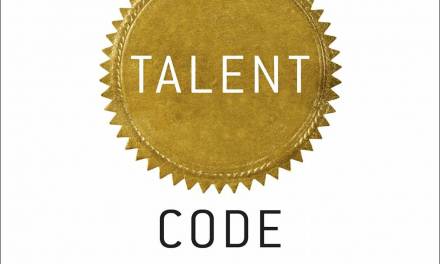 |
| San Diego Comic Con |
David Palumbo
Last weekend was my sixth consecutive year of San Diego Comic Con as an exhibitor, which is in addition to a year previous in Artists Alley and some years before that as a straight attendee (or as I think of it, a man without a chair). Though I didn’t know it for sure a week ago, I can now say that this was also my last year at Comic Con as an exhibitor for the foreseeable future.
My decision isn‘t particularly noteworthy as it relates to the show itself. Plenty of others decided to let go their booths this year (Mile High Comics has posted similar news which in their case actually IS news) and I am not writing this as a take down of the changing landscape of SDCC by any means. Everyone already gets that anyway. I had a great weekend and came out somewhere ahead on money, so all in all a good deal. So why leave? That is what I want to ramble about. Why leave a show, why join a show, why do any shows at all?
Over the years I have come to see two good basic reasons for an artist to go through the trouble of exhibiting their work at a convention. One reason is to make money, the other reason is to make contacts. Any other reasons (to stroke ego, to party, etc.) are secondary or dubious in my mind. Of course, you probably want to make money AND contacts, but I personally believe that one needs to be prioritized ahead of the other in order to be successful.
Before I ever popped up a banner or hung a painting on a collapsible wall, I spent a few years walking conventions as an attendee. I was armed only with my portfolio, my leave behinds, and comfortable shoes. This was a great way to jump into the industry because it allowed me to be proactive in getting my work to the people that I wanted to work with. I was tireless in gathering advice and recommendations on who I might seek out from other artists. I did formal portfolio reviews, late night portfolio reviews, and “if you have a minute…” show floor portfolio reviews. It was a good method and didn’t cost much other than travel expenses and a stack of postcards. After a few years of this, I was fortunate enough to have some steady work coming in and to have cracked open the doors of some of my target clients.
Going from attendee to exhibitor. AKA, the Big Time
For any artists who have not worked a show booth before, I’ll take a brief moment to describe what goes into setting up as an exhibitor. Number one: money. You will need to pay for the space rental (a few hundred to a few thousand for a 10’x10’ plot depending on the show), some kind of display walls and/or signage, framing, shipping, promo materials like postcards and such, medical bills for the nervous breakdown when your paintings are lost or damaged in transit, etc. It adds up. Oh, and if you’re not careful you could accidentally get slapped with a $450 labor fee for letting the convention center union pick something up and move it. True story. In addition to this, it takes a good bit of mental energy and time to handle all of the paperwork, coordinate your promo materials, get everything shipped out (and timed to arrive on the correct day), and make sure you understand load-in procedure to avoid said labor fees. The more shows that you do, the easier this stuff gets but it is still exhausting and you haven’t even arrived yet. Once you get there, you still have the make your empty 10’x10’ concrete patch look like something presentable which means building walls, hanging art, hiding shipping cartons, and yet more etc.
As I was getting ready to take this plunge, I’d heard some more experienced artists say that, as an exhibitor, when you are walking the floor you constantly worry what walk-by traffic you might be missing at your booth. Some clients can’t be found. They need to find you and it doesn’t mean much if you aren’t there to meet them so it is best if you just never leave your space. On the flip side of that, standing in a booth means that you have to let go of chasing any art directors down who you want to specifically talk with. This is really what decides if you should be stationary or mobile: are you going to be more effective chasing specific target clients or letting a more general audience come to you?
I mentioned above the two motives of exhibiting: sales and promotion. I feel one of the two should be prioritized and that it should be done deliberately and well in advance of the show for several reasons. First, you will design your display space differently for the different purposes. A booth aimed at making sales will resemble a retail store with products front and center. Merchandise should be easy to access and browse and prices clearly displayed. This style of booth often tends to take the approach of pushing the table up near the aisle with stacks of books and such nicely arranged, maybe a few print bins or racks, and big pop-up banners to draw the eye. Some have so much product that they build a mini-store in their booth space which people can enter. By contrast, a promo-oriented booth might push the retail to a more discreet location and instead cultivate a more gallery like atmosphere. Pushing the table to the back and opening the space up as much as possible, maybe even leaving chairs out for people to use. This space is inviting and better facilitates longer conversations with collectors and would-be clients.
Knowing your purpose will also dictate what sort of printing and planning you’ll do ahead of time. Are you working up a new sketchbook for sale at the show? Creating new elaborate promo items to give to select clients? Do you need new postcards and business cards? Do you want to dedicate some table space to a portfolio? Even in choosing which pieces to display, all decisions should come back to that original question: what is your key purpose?
Finally, knowing your purpose will help you gauge if the show was a success. If your aim is sales, then tallying expenses, inventory, and profit will tell a very clear story about how you came out. If your aim is promotional, the result will be murkier because some leads may take months or longer to pay off. Some may pay off and you won’t even know that they originated from a brief meeting at a show. Ultimately though, I feel you will get a sense if you were collecting a lot of business cards and shaking a lot of hands that new seeds had been planted for future business.
So I’m not going to have a booth next year at San Diego Comic Con. The reason why? I’d viewed that show as a major promotional opportunity since my very first visit almost ten years ago. In the time between, I’ve made a number of good contacts, great friends, and lasting business relationships directly from that show. As costs have increased and the show itself has changed, however, I’ve had to step back and re-examine my priorities. I realized this year that the two leading reasons to continue were to not lose my booth and to spend time with my booth partner/neighbors. Those might be strong reasons in my heart, but they are not very compelling from a business standpoint. I few out there knowing that I had more or less lost my real purpose at SDCC. Ultimately it was the similar feelings of my booth partner and neighbors that sealed it. Everything that I get from that show anymore has gone back to being more about mobility: targeted promotion (this time with existing clients), being social, and keeping the costs reasonable.
I’ll likely be back next year as much for sentimental reasons as anything else, but I’ll be traveling light and once again happy to be a man without a chair.







Great article… over time the technology changes, the business model changes, and sadly the venue changes… I'm experiencing this same feelings with the CAAS guitar fest in Nashville… used to go to make contacts, sell a few transcriptions and CD's; now it seems we only talk about our grandkids and previous surgery. We don't say too much about the guitar techniques of Chet Atkins anymore…
But that's cool too. I've definitely gone to shows with the main motivation being to see some great art and meet up with long distance friends. I think it is just important to be aware of that to get the most out of it. If I do end up back in San Diego next year, it will be mainly for social reasons. I might even get to see the beach!
There's a beach in San Diego? I've only been to SDCC once so haven't really given it a fair shake but for me it will always be a social thing because of what my work is. It was fun and scary when I did carve out a little booth area for myself, thanks to some kind people, but I had a lot better time roaming and meeting. Did run into a wall of stormtroopers though. Wet myself a little.
Good post Dave. When I am sitting at tables at such venues, I long to be studio painting. There is only so much bad air, bad convention center overpriced food, and hemorrhoid inducing chair sitting one can take. And depending on the venue…$100 to $5000(based on personal experience). So you have to ask what IS it worth. The concept of “being seen” buy into image, which to me implies fake. The work is the work. SDCC has become a monster. A monster of exhaustion and logistics and cost. Which is why aside from two visits(one as a guest of Warner Bros which was the way to go) wore thin for me.
“There is only so much bad air, bad convention center overpriced food, and hemorrhoid inducing chair sitting one can take. ” ahh the glamorous life of an artist…